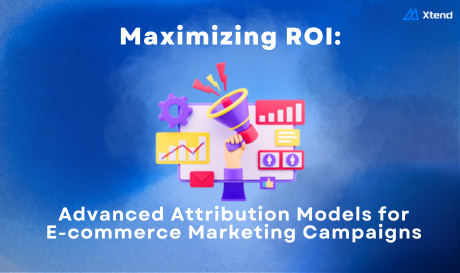In today's complex digital landscape, e-commerce businesses face the challenge of accurately measuring the impact of their marketing efforts across multiple channels. Traditional attribution models often fail to capture the nuanced customer journey, leading to suboptimal resource allocation and missed opportunities. Enter advanced attribution models—the key to unlocking true ROI potential in your e-commerce marketing campaigns.
The Limitations of Single-Touch Attribution
Many e-commerce marketers still rely on single-touch attribution models, such as first-click or last-click. While these models are simple to implement, they paint an incomplete picture of the customer journey. In a world where consumers interact with brands across numerous touchpoints before making a purchase, attributing success to a single interaction can be misleading and counterproductive.
Advanced Attribution Models: A Paradigm Shift
1. Multi-Touch Attribution
Multi-touch attribution models acknowledge that multiple interactions contribute to a conversion. Popular variants include:
- Linear Attribution: Assigns equal credit to all touchpoints in the conversion path.
- Time Decay: Gives more credit to touchpoints closer to the conversion.
- Position-Based (U-shaped): Attributes more value to the first and last interactions, with the remaining credit distributed among middle touchpoints.
These models provide a more holistic view of your marketing efforts, helping you understand each channel's role in driving conversions.
2. Data-Driven Attribution
Leveraging machine learning algorithms, data-driven attribution analyzes your specific customer data to determine the most accurate credit distribution across touchpoints. This model continuously learns and adapts based on new data, making it particularly effective for e-commerce businesses with complex, non-linear customer journeys.
3. Algorithmic Attribution
Like data-driven models, algorithmic attribution uses advanced statistical techniques to assign credit. These models can account for ad frequency, sequencing, and external variables influencing conversions, providing a highly nuanced view of your marketing performance.
Implementing Advanced Attribution: Best Practices
1. Ensure Data Quality: The accuracy of your attribution model depends on the quality and comprehensiveness of your data. Implement robust tracking across all channels and touchpoints.
2. Choose the Right Model: Select an attribution model that aligns with your business goals, customer journey complexity, and available resources.
3. Integrate Your Marketing Stack: Implement your chosen model across all marketing tools and platforms for consistent measurement and insights.
4. Analyze and Optimize Continuously: Review your attribution data regularly and use the insights to refine your marketing mix and campaign strategies.
5. Consider Customer Lifetime Value: When assessing campaign performance, look beyond immediate conversions and factor in long-term customer value.
The ROI Impact of Advanced Attribution
Implementing advanced attribution models can significantly boost your marketing ROI:
1. Optimized Budget Allocation: Understand which channels and campaigns drive conversions, allowing for more efficient resource distribution.
2. Enhanced Customer Insights: Gain a deeper understanding of your customers' paths to purchase, which will inform both marketing and product strategies.
3. Improved Cross-Channel Synergy: Identify how different channels drive conversions, enabling more effective integrated marketing campaigns.
4. Better ROI Measurement: Get a more accurate picture of your marketing ROI, which can help justify investments and secure budgets for high-performing channels.
5. Personalization at Scale: Use attribution insights to create more relevant and timely touchpoints throughout the customer journey, improving conversion rates.
Overcoming Implementation Challenges
While the benefits are clear, implementing advanced attribution models does come with challenges:
- Technical Complexity: More sophisticated models may require significant resources to implement and maintain.
- Cross-Device Tracking: Accurately tracking customers across multiple devices remains a challenge in attribution modeling.
- **Organizational Buy-In: Shifting from traditional to advanced attribution models may require cultural changes and stakeholder education.
As e-commerce continues to evolve, so must our approach to measuring marketing effectiveness. Advanced attribution models offer a powerful way to understand the true impact of your marketing efforts and maximize ROI. By moving beyond simplistic attribution and embracing more sophisticated models, e-commerce businesses can make more informed decisions, optimize their marketing mix, and ultimately drive greater success in an increasingly competitive landscape.
Remember, the key to successful attribution lies not just in choosing the right model, but in consistently applying its insights to refine and improve your marketing strategies. With the right approach, advanced attribution can be a game-changer for your e-commerce marketing campaigns, paving the way for unprecedented growth and efficiency.











